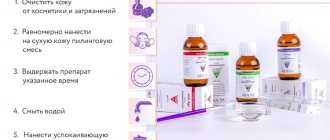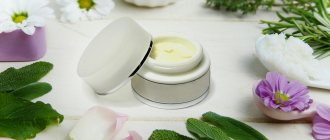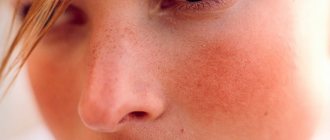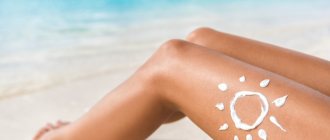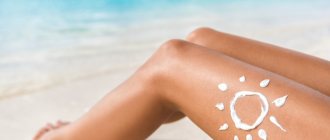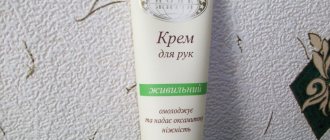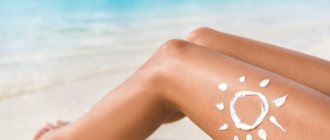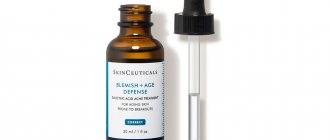Peels are an amazing cosmetological invention with which you can renew your complexion, give it radiance, get rid of dead cells - and, as a result, prolong youth. But are all the products offered by manufacturers today really that good? We know exactly which ones are top! We present to you the ranking of the best facial peels in 2022.
Attention: we are talking exclusively about products for home use, because professional peelings can only be used by cosmetologists and are prescribed after examinations and consultations.
When compiling the rating, we proceeded from reviews of real customers, personal sales statistics of KrasotkaPro and open data from the Yandex search engine.
The criteria by which we evaluate peelings of each brand:
- Effectively getting rid of dead cells.
Our main goal. - Evening out skin color.
Great bonus! - Sufficient hydration.
There should be no feeling of dryness after peeling. - Perform additional functions.
It’s great if the product also helps, for example, reduce pigmentation. - Compound.
Most users prefer natural composition with effective ingredients. And, of course, peeling should not cause an allergic reaction. - Texture.
It should be comfortable to use: not drip and not be thick like sour cream. - Smell.
Should be neutral or unobtrusive, soft. - Price.
Saving is always good, but we're looking for the perfect example of value for money.
Point system:
By quality:
- 1 point for effective removal of dead cells;
- 1 point for evening out skin color;
- 1 point for sufficient hydration;
- 0.5 points for performing each additional function: reducing pigmentation, fighting wrinkles, and so on;
- 1 point for good composition;
- 1 point for pleasant texture;
- 1 point for neutral odor or light aroma;
- We deduct 1 point for allergy complaints.
By cost:
- 4 points for costs up to 200 rubles;
- 3 points for a cost from 200 to 400 rubles;
- 2 points for a price from 400 to 600 rubles;
- 1 point for a price over 600 rubles.
By popularity:
- 6 points for more than 30,000 queries in Yandex per month;
- 5 points for 24,000-30,000 queries in Yandex per month;
- 4 points for 18,000-24,000 queries in Yandex per month;
- 3 points for 12,000-18,000 queries in Yandex per month;
- 2 points for 6,000-12,000 queries in Yandex per month;
- 1 point for less than 6,000 queries in Yandex per month.
Once we've covered each of the top 10 facial peel brands and assigned scores, we'll compile all the data into a table.
Please note that several creams can be located in the same place at once - it all depends on the number of points. So…
Who should not peel?
It is not recommended to carry out this procedure for chronic diseases during their exacerbations, colds, pregnancy, keloid scars. Peeling should not be used for treatment by people who have received a fresh tan and have already undergone cosmetic procedures with traumatic effects (cleaning, resurfacing, mesotherapy). Contraindications include oncology, rosacea, fungal and infectious diseases of various types. You should be attentive to allergic reactions to the components of the drug and microtraumas on the surface of the skin with a violation of its integrity.
What is the difference: home peeling and peeling at a cosmetologist
Peels that can be used at home do not penetrate deeply into the skin and give an unnoticeable result, but they certainly help maintain an even tone and healthy skin. Chemical peels performed by estheticians have a lower pH level than at-home peels, so they can penetrate much deeper into the skin and target skin problems such as hyperpigmentation and acne. Chemical peels can cause redness of the skin; a recovery period will last for several days, during which the “old” skin will gradually peel off and renewed skin will appear.
Chemical peeling performed by cosmetologists will be much more effective for your skin than peeling at home.
How is peeling performed?
Acid peeling is a seasonal procedure that is recommended during the cold season. This is due not so much to the air temperature, but to the fact that in autumn and winter the sun is much less active than in summer, which means the risk of pigmentation is reduced.
The procedure consists of several stages:
- Cleansing. The doctor removes remaining cosmetics and impurities using neutral products. After this, the surface of the epidermis is thoroughly dried;
- Application of the drug. Peels can be in the form of aqueous solutions, gels, thick creams. The denser the consistency, the more delicate the effect. In any case, the product is applied first to denser, and only then to more delicate areas of the skin;
- Removing a tool. Depending on the type of peeling, the drug remains on the face from 1 to 15 minutes. After this, you can proceed to the next stage. There are also peelings, for example yellow peeling, with which the patient goes home and washes off on his own after a few hours;
- Neutralization. A preparation is applied to the treated areas, which tones, refreshes and soothes the epidermis, moisturizes it and neutralizes the effects of acids. The neutralizer should also be left on the face for a few minutes and then washed off with water. If you skip this step, burns may occur;
- Hydration. After removing the neutralizer, a moisturizing cream, gel, serum or mask with a soothing effect is applied to the face. At this time, the skin is especially receptive, so the effect of cosmetics is extremely effective.
Before leaving the clinic, you must protect your epidermis with SPF cream.
Varieties
Depending on which layers are affected by chemical compounds, there are three types of peelings:
- Surface. The most gentle procedure that can be carried out even at home (in this case, the most gentle preparations with a minimum content of active ingredients are used). The area of influence is limited to the epidermis (stratum corneum), living cells are not affected. The acid concentration is low (up to 20%), the treatment process is painless, and recovery does not take much time. The effect accumulates, so superficial peelings are carried out in courses that consist of 5-10 sessions. By the end of the course the effect reaches its maximum. The procedure evens out and improves complexion, giving the skin velvety, fresh, smooth and tender. Superficial peelings are often used as part of complex procedures, as they improve the penetration of beneficial substances from masks, serums, and creams into the dermis;
- Median. In this case, more concentrated (30-40%) drugs are used, which act not only on the epidermis, but also on the dermis (papillary layer). Intense exposure allows you to achieve a noticeable rejuvenation effect, eliminate post-acne and wrinkles. However, this option is more damaging to the skin than the previous one. For this reason, it is not recommended for everyone; moreover, medium peeling can only be entrusted to a professional cosmetologist in the clinic. An example of a medium peel is the TSA peel with trichloroacetic acid. Such peels are now used extremely rarely due to the large number of side effects;
- Deep. The impact extends to all layers of the skin, including the basal layer. To treat the skin, phenol is used, a toxic substance, which is supplemented with compounds that prevent the rapid absorption of the drug. This is a very aggressive and traumatic procedure related to surgical manipulations; it is necessarily carried out using anesthesia and only in a hospital. Deep effects can significantly rejuvenate the face and get rid of such serious defects as scars, but it is recommended to do it only in adulthood (over 60 years old) and no more than once in a lifetime. The recovery period after such manipulation can take six months.
The higher the concentration of acids, the stronger the burn, the more the skin is injured, and the more actively it is restored.
Peels for home use should not be overestimated: the acid content in them is minimal, and the effect cannot be compared with the results of procedures performed in the clinic. When creating cosmetics, manufacturers rely on safety, so that even if used incorrectly, you cannot harm yourself.
Professional products are a completely different matter. They are designed for specialists who strictly follow protocols and strictly follow all recommendations. That is why even a course of superficial peelings in the clinic provides a noticeable rejuvenation effect (detailed study of the usefulness of chemical peels).
The effectiveness of peelings depends on the concentration of active substances, pH (the higher it is, the less damage to the skin), application technique and number of layers, exposure time and the previous preparation procedure.
Effect
After a course of procedures, the face becomes fresh and youthful. Peels are very popular precisely because the results are clearly visible. It can be appreciated not only by attentive observers - even casual acquaintances will notice a clear improvement in the condition of the skin.
Compliments are guaranteed after the first sessions, and by the end of the course:
- Improves and evens out complexion;
- Wrinkles are smoothed out and disappear;
- Elasticity and turgor increase;
- Pigmentation disappears;
- The skin becomes smooth and soft;
- Acne goes away;
- Scars are smoothed out, incl. from post-acne;
- Pores tighten;
- The functioning of the sebaceous glands is normalized.
Peeling courses combine well with other cosmetic procedures - both hardware and injection. A cosmetologist will tell you how best to combine different types of treatment to achieve optimal results.
Rehabilitation
After chemical peels, you need to take good care of your skin to give it a chance to recover. First of all, hydration is necessary. It is recommended to use products with hyaluronic acid, panthenol, aloe and vitamins. In addition, you should avoid any aggressive procedures, the use of alcohol-containing cosmetics, retinoids, and mechanical scrubs. When crusts appear, you cannot remove them yourself - you should be patient and wait until they fall off spontaneously.
It is extremely important to protect your face from ultraviolet radiation. The renewed epidermis is especially sensitive to such effects, so the risk of age spots increases. So the use of protective lotions with a high SPF factor is mandatory not only in the summer (when peeling is generally not recommended), but also in the winter.
To maintain the effect, your doctor may recommend using special cosmetics containing acids. They can be included in creams for everyday use in low concentrations sufficient to preserve the results for a long time.
After superficial treatment, the skin is restored quickly, however, during the entire course and two weeks after its completion, careful care and avoidance of any aggressive influence are necessary.
Deep peeling – what is it?
The deep peeling procedure has been known for a long time - it has been done in salons for more than 70 years. Previously, the main component was only phenol. Now oils are added to it to soften the skin and to reduce absorption into the blood, as well as glycerin and propylene glycol.
Each salon may have its own original recipe for such a composition, but phenol remains the main component.
In general, there are superficial, medium and deep peels; they differ in the depth of impact on the skin. Superficial and medial are less traumatic than deep, so women should be especially careful if they decide to take this step. The peeling procedure is a necessity for skin at different ages (from 30 to 55 years old), because it cleanses the skin and gets rid of dead cells. The basis of the procedure is the subsequent regeneration of the skin, its natural restoration and renewal.
Deep facial peeling allows you to get rid of not only dead cells, but also hyperpigmentation, small scars, wrinkles, and acne marks.
